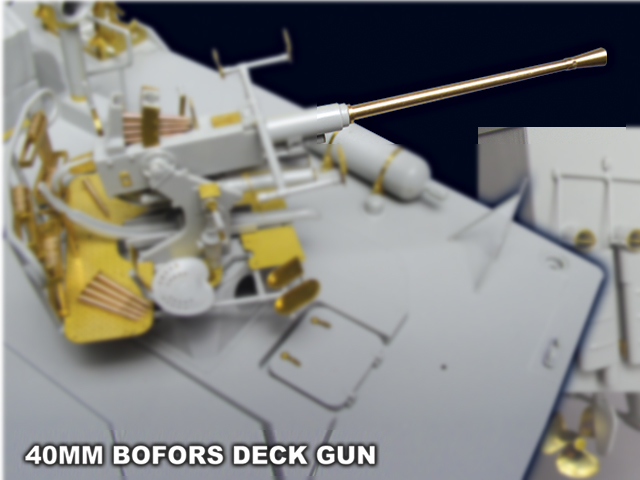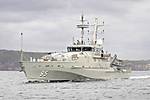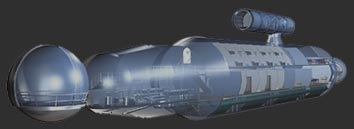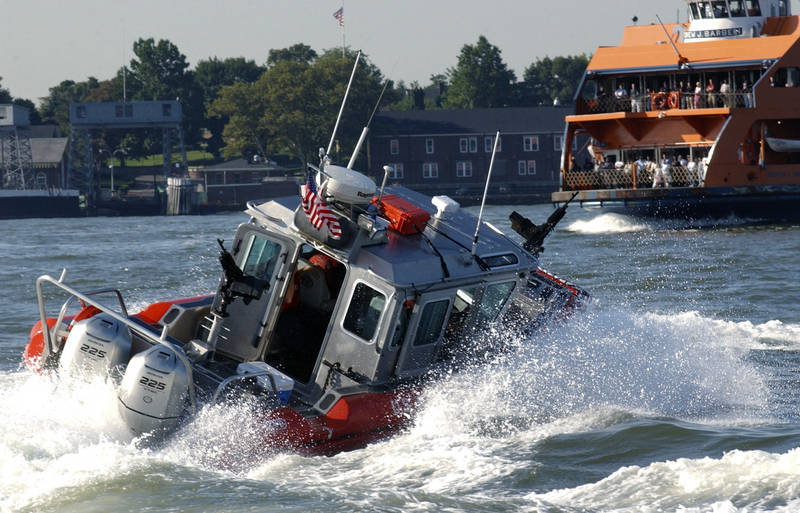
Ahoy mates and welcome to MSW’s Scuttlebutt! Let’s see what going on today.

U-995 Type VIIC/41 Walk-Around
MSW Crew-mate Jan Klarbæk (Mr.Mox) sends us a companion walk-around feature to his Laboe Naval Memorial feature currently running at MSW, of the U 995, the only surviving Type VII submarine in the world!
Walk Around
Marinen Ehrenmal at Laboe
MSW crew-mate Jan Klarbæk (Mr.Mox) took a recent trip to Laboe, Germany, to the Marinen Ehrenmal (Maritime memorial), and has shared his experience in this MSW feature with us.
Maritime memorial
"Achtung Schnellboote!"
MSW Crew-mate Jeff Herne (Angry_Ensign) sends us a gallery of images of an amazing, nearly 100% scratchbuild of an S-100 Scnellboote in this MSW "On Display" Feature!
"Achtung Schnellboote!"

New brass barrels for 1/35 PT boat from LionRoar
LionRoar has announced that they are now offering a set of brass upgrades for the Italeri ELCO PT Boat.. Here are the manufacturer’s photos.


1984 Version USCG Cutter Tamaroa Available from Battlefleet Models
Harry Abbott at Battlefleet Models is proud to announce that a 1984 Version of the USCG Cutter Tamaroa is available today. Retail price will be $30.00USD.

This Day in U.S. Naval History
Today is National Coast Guard Day in the United States.
1846 - Sailors and Marines from USS Congress capture Santa Barbara.
1858 - First trans-Atlantic cable completed by USS Niagara and British ship Agamemnon.
1944 - 5th Fleet carrier task forces begin air attack against Iwo Jima and the Bonin Islands.
1947 - Birthdate of the Medical Service Corps.
1964 - USS Turner Joy (DD 951) and USS Maddox (DD 731) report being attacked by North Vietnamese PT boats in Gulf of Tonkin.
Newest Armidale Class Patrol boat to enter service
HMAS Maryborough is the newest Armidale Class Patrol boat to enter service in the Royal Australian Navy, recently commissioning in Brisbane. HMAS Maryborough enters Sydney Harbor for the first time.The Armidale class patrol boat is a class of fourteen patrol boats built for the Royal Australian Navy (RAN). The class entered service in June 2005, and replaces the RAN's Fremantle class patrol boats.

Planning for the Armidale class began in 1993, as a plan to replace the Fremantle class, which was due for retirement in 1998. This evolved into a joint program with Malaysia to construct an offshore patrol craft. When Malaysia pulled out, the plan was scrapped, and instead the Fremantles underwent a life-extending refit. In 2002, the cost of maintaining the ageing patrol boats led the Department of Defence to reinstigate the replacement project, under the designation SEA 1444.
SEA 1444 marked several departures from the Department's standard acquisition requirements. Instead of specifying a number of vessels, the coverage required was given (specified in ship-days per year) with the producer to determine how many ships were needed. The ships had to meet specific performance parameters, such as the ability to conduct boarding operations in conditions up to Sea State 4, and to maintain surveillance capability up to Sea State 5. The producer was also required in the contract to provide support and maintenance for the ships, for fifteen years after construction completed. The tender was awarded to Defence Maritime Services (DMS) and Austal Ships in December 2003, who offered twelve ships (increased to fourteen in 2005) based on an expanded version of the latter's Bay class patrol boat, used by the Australian Customs Service. The contract was valued at AU$553 million, with each ship costing between AU$24 million and AU$28 million to construct. The DMS/Austal design was selected from three design tenders; the other two from Australian Defence Industries (ADI) and Tenix.
Lead ship HMAS Armidale was commissioned into the RAN in June 2005. Two other patrol boats were delivered to the RAN in 2005, six in 2006, and five in 2007, with the final ship in the class, HMAS Glenelg, delivered in October 2007 and commissioned in February 2008. All fourteen ships were built at Austral Ships' shipyard at Henderson, Western Australia.
The Armidale class has demonstrated an improved seakeeping ability over the preceding Fremantle class, as the ships are 15 metres longer, 85 tons heavier, and have stabilisers incorporated into the design. They are able to survive conditions up to Sea State 9. The ships also have an increased range of 3,000 nautical miles at 12 knots, allowing them to patrol the waters around the distant territories of Australia, including the Cocos (Keeling) Islands and Christmas Island. Armidales are designed for patrols of 21 days, although operational requirements may require extension. Crew comfort is also significantly improved over the Fremantle class, with air conditioning throughout the entire ship (excluding engine and machinery compartments). Non-commissioned sailors are housed in four-berth cabins, as opposed to the central sixteen-berth mess deck of the Fremantles, while senior sailors and officers either have individual or share two-berth cabins. A 20-berth compartment for auxiliary accommodation was available for when the ship has to transport soldiers or detainees; however the release of toxic fumes into this compartment aboard HMAS Maitland, although blamed on improper operation of sewage treatment facilities, has led to a ban on the compartment's use across the class. Crew have access to e-mail and satellite television, and the galley is better equipped and suited to use in heavy seas. Boarding operations have been enhanced by the inclusion of two 7.2 metre, waterjet propelled rigid-hulled inflatable boats (RHIB). The RHIBs are larger and more powerful than the single RHIB aboard a Fremantle, and as each RHIB has a dedicated cradle and davit, the boats can be launched and recovered easily.
The introduction of the class into service has not been without problems. Since June 2005, all active Armidales have undergone operating restrictions on two occasions, both due to water contamination of the main fuel systems. The first occurrence, in September 2006, led to the suspension of operations by the patrol boats for a month, and the engineering controls were redesigned. The problem occurred again in January 2007, and led to an 'operational pause' while Austal redesigned the fuel system, engineering procedures were altered, and fuel quality criteria were tightened. The five ships yet to be completed were fitted with the modified fuel system during construction, while the active ships were refitted over the course of 2007. As of December 2007, no further fuel problems have occurred.
New Personal Luxury Submarine From U.S. Submarines
The Phoenix 1000 is a 65-meter (213') personal luxury submarine. The initial design was originally executed for a client and now awaits a buyer. As proposed, the submarine would constitute the single largest private undersea vehicle ever built, and arguably, one of the most significant personal transportation devices of the century.


A Luxurious Undersea Vehicle
This design, which we have named the Phoenix 1000, has more than ample space. The total interior area of the submarine is in excess of 460 square meters (5000 square feet). The significant volume, coupled with very large acrylic viewports, and the potential for relatively large open spaces, results in a vehicle as luxurious as the finest of motor yachts.
Clearly, the Phoenix provides its owner with substantially more capability than a simple yacht - the opportunity to explore the depths of the world's oceans in perfect comfort and safety. The Phoenix is capable of making trans-Atlantic crossings at 16 knots yet can dive along the route and explore the continental margins of some of the most fascinating waters on earth. And unlike surface yachts, when the water gets rough, the submarine can submerge into a perfectly smooth and quiet environment, continuing on toward its destination, providing a ride unsurpassed in quality-unequaled by the finest motor coach or the most luxurious executive aircraft.
The Size Advantage
At 65-meters (213 feet) in overall length, and with a beam in excess of 8 meters (26 feet), the Phoenix is a vehicle of formidable size. Yet despite its 1500-ton displacement, the submarine is quite streamlined. Given the significant waterplane area and ample internal volume, which allows for greater battery storage, the Phoenix will out-perform smaller counterparts in surface speed, submerged speed and submerged endurance. The large pressure hull diameter allows for very large acrylic viewports, making the undersea viewing capability truly extraordinary. The interior space, with the noted absence of structural bulkheads, provides for tremendous versatility in interior layout and space planning. And finally, the Phoenix's large size coupled with its integrated roll stabilization system makes surface transit quite comfortable in all but the worst conditions.
A Walk Through the Phoenix
Join us as we examine the physical spaces of the Phoenix 1000.
Flying Bridge
The uppermost level of the vessel is the flying bridge. This area is similar to its equivalent area on most yachts, with the exception of the fact that the materials selected are subject to immersion in water. Ample space exists for lounging, and cushions may be brought up from the area below. The flying bridge also houses the pressure-compensated radar radome, GPS antennae and satellite communications radome, as well as radio aerials, running lights, etc. A remote steering station is also available.
Deck Saloon
Immediately below the flying bridge and accessible through a large hydraulically operated hatch and a stairway, is the deck saloon. As proposed, this area would be composed of structural acrylic cylindrical sections 2.1 meters (7') in diameter and 20 centimeters (8") in thickness. The overall length of the deck saloon pressure hull would be 12 meters.
The deck saloon would have a comfortably appointed interior and would boast an incredible view for observation, both on the surface and when submerged. By fitting transparent sections into the deck of the flying bridge, a view above can be enjoyed as well.
In the forward portion of the saloon is the surface bridge. This area contains all the necessary control, monitoring and navigation equipment to operate the submarine in the surfaced condition. The captain has a hemispherical sector acrylic viewport immediately in front, with the transparent cylindrical walls to either side.
The aft portion of the saloon has a large acrylic window, providing a view astern that also acts as a large hydraulically operated hatch. A small automobile could be kept in the aft section if desired.
Superstructure
The superstructure itself is composed principally of aluminum (or FRP if the owner prefers), and it houses the deck saloon pressure vessel and also provides the structural base for the flying bridge. There is a large degree of latitude possible with regard to the styling of the structure, with the caveat that its hydrodynamic efficiency will have a significant effect on the submerged speed of the submarine.
Aft of the deck saloon is a covered space that can be either fully or partially enclosed. The greater the degree of closure to the after portion of the structure, the less turbulence and the more hydromdynamic efficiency. Hydraulically actuated after doors could be designed to open, allowing fresh air to circulate. The area would be excellent for covered, informal, deck- level dining.
Docking Minisub
Aft of the superstructure, or optionally, above the control cabin on the bow, is an area for a docking minisub. Utilizing a special docking collar, this vehicle is capable of leaving the Phoenix while submerged and making excursions down to 610 meters (2000 feet). With both top and bottom hatches, the minisub could also bring passengers from the surface to the submarine lying at depth. The minisub could be designed to hold between two and eight passengers, depending upon the owner's preferences. Additionally, in the unlikely event of an emergency at depth, the minisub could be used to take passengers and crew to the surface.
Forward Control Room
The forward control room is entered from the main deck through a watertight, pressure-proof door. The control room has a 2.4 meter (8') diameter hemispherical sector acrylic viewport forward and three 1.8 meter (6') diameter viewports on either side, with the foremost pair angled slightly forward.
The control room contains all of the control and navigation equipment necessary to operate the submarine while submerged. The 8 meter x 4 meter (26' x 13') area contains sufficient space to fit comfortable lounge chairs for passenger observation while underway.
Main Passenger Areas
The main passenger area consists of two decks, each 31 meters (102') long and 6 meters (20') wide. The upper deck is accessed from one of two hatches, either from the deck saloon or from a hatch to the after portion of the superstructure. Two stairways, one in the center of the deck, the other in the after section, lead to the lower deck.
The upper deck is intended to provide space for an engineering workstation, a switch and contactor room, crew cabins and mess, as well as the galley. The forward portion, which ends at a bulkhead, is designed as a room of the owner's choosing.
The main deck is situated such that the forward portion, with eight 1.8 meter (6') diameter acrylic windows, contains the living and dining areas, while the section aft of the beam houses the owner's stateroom and guest cabins. Five viewports, 90 centimeters (35") in diameter, are situated on both port and starboard sides.
Below the passenger area is the battery compartment and bilge. A narrow manway allows access through the compartment for battery maintenance.
Engine Room
The engine room is accessed through doors at the after portion of both passenger decks. The space contains the majority of the equipment necessary for the submarine's operation, including the main diesels, motor generators, drive systems, air compressors, hydraulic aggregates and life support systems. The upper level of the engine space provides access to the minisub, and in the stern section, to a diver lock-out chamber. The bottom level allows maintenance of the main engines and related components.
Diver Lock-out Chamber
A spherical diver lock-out chamber, 2.4 meters (8') in diameter is fitted above the shafts and attached to the aftermost section of the pressure hull. The chamber allows a diver to enter or exit the submarine from the area between the shafts at depths of up to 45 meters (150'). The chamber can be fitted with decompression capability if required.
Commercial Opportunities
The Phoenix would be suitable for use as an exclusive submarine cruise ship or as a charter yacht.
The estimated price of the Phoenix is $78 million.

EA-18G Conducts First AIM-120 Live Fire
The EA-18G Test Team at NAWCWD China Lake conducted its first AIM-120 Advanced Medium Range Air-to-Air Missile (AMRAAM) live fire on July 23, marking another critical milestone for the Growler test program.
The EA-18G is an electronic attack variant of the F/A-18F undergoing developmental test as an eventual replacement for the EA-6B Prowler. In addition to being the first AIM-120 firing, this event marked the first release of any ordnance off the versatile platform.
As part of the integrated test and evaluation of the aircraft, the Growler test team comprised of both developmental and operational testers executed a successful shot, demonstrating a lethal, self-contained air-to-air capability that the electronic attack community has previously relied on other aircraft to provide.
The live fire flight was flown by Lt. Jeff Millar, a VX-9 pilot from a Hornet background, and Lt. Elizabeth Somerville, a VX-31 electronic countermeasures officer/weapon systems officer from a Prowler background. Invaluable support was provided by Boeing maintenance and test personnel, VX-31 ordnance, the Point Mugu and China Lake AMRAAM project team, China Lake range safety and range control as well as the entire EA-18G test team.
While jamming threat systems located at Echo range, the Growler engaged and fired on the BQM-74E target drone. Airborne chase cameras as well as optical trackers on the target drone confirmed safe weapon separation followed by a very close pass to the target drone, scored by range personnel as a hit.
Photo of the Day

A 25-foot Defender Class security boat attached to the Coast Guard Maritime Safety and Security Team 91106 sweeps the East River around Whitehall Terminal as the Staten Island Ferry arrives to Manhattan.
Gator














